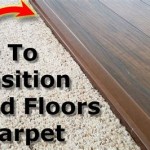Pine Wood Flooring: Weighing the Advantages and Disadvantages
Pine wood flooring, a popular choice for homeowners seeking a natural and aesthetically pleasing surface, presents a multitude of considerations. This article aims to provide a comprehensive overview of the advantages and disadvantages associated with choosing pine wood for flooring, enabling informed decision-making during the selection process. The characteristics of softwood, affordability, and aesthetic appeal are central to pine's flooring applications, however, its durability and maintenance requirements also warrant careful thought.
The Appeal of Pine: Aesthetics and Affordability
One of the primary reasons homeowners are drawn to pine flooring is its inherent visual appeal. Pine exhibits a warm, inviting aesthetic due to its natural grain patterns and knots. The color of pine ranges from a light, creamy yellow to a richer amber, providing a versatile backdrop for various interior design styles. This natural coloration can be further enhanced or altered through staining and finishing techniques, allowing for customization to match specific design preferences.
Beyond its visual charm, pine flooring is generally more affordable than hardwood options like oak, maple, or walnut. This cost-effectiveness makes it an attractive choice for budget-conscious homeowners or those looking to cover large areas. The lower material cost translates to potential savings on the overall flooring project, freeing up resources for other home improvements.
The relative softness of pine also contributes to its workability. Installers often find pine easier to cut, nail, and shape compared to denser hardwoods. This can potentially reduce installation time and labor costs, further enhancing its affordability.
Furthermore, pine is a readily available resource in many regions, contributing to its lower cost and potentially reducing transportation emissions compared to exotic or less common wood species. This aspect aligns with environmentally conscious consumer choices, making pine a more sustainable option in some cases.
Durability and Structural Considerations of Pine Flooring
While pine boasts aesthetic and economic advantages, its durability is a significant consideration. Pine is a softwood, meaning it is less dense than hardwoods. This inherent softness renders it more susceptible to dents, scratches, and wear and tear from daily use. The impact resistance of pine flooring is lower, making it vulnerable to damage from dropped objects or heavy foot traffic.
The relative softness of pine necessitates a more careful approach to maintenance. Regular sweeping or vacuuming is essential to remove abrasive particles that can scratch the surface. The use of area rugs in high-traffic areas can provide an additional layer of protection, mitigating wear and tear. Specific cleaning products designed for wood flooring are recommended to avoid damaging the finish or the wood itself.
The type of finish applied to pine flooring significantly impacts its durability and resistance to wear. Polyurethane finishes are commonly used to provide a protective layer against scratches and moisture. However, even with a durable finish, pine flooring will still show signs of wear and tear over time. This aged appearance can be considered a desirable characteristic by some, contributing to a rustic or lived-in aesthetic.
The structural integrity of pine flooring can also be affected by moisture levels. Pine is susceptible to expansion and contraction in response to changes in humidity. This can lead to gaps forming between planks or cupping of the flooring. Maintaining a stable indoor humidity level is crucial to minimize these effects and prolong the lifespan of the flooring. Proper subfloor preparation is also essential to ensure a stable and level surface for the pine flooring to be installed upon. The subfloor must be dry and free from any moisture problems before installation to prevent warping or other issues.
Maintenance and Long-Term Care of Pine Flooring
The upkeep of pine flooring demands a proactive maintenance regimen to preserve its appearance and integrity. As previously mentioned, regular cleaning is critical to prevent the accumulation of dirt and debris that can scratch the surface. Avoid using harsh cleaning chemicals or abrasive scrubbers, as these can damage the finish and the wood itself. A damp mop with a mild wood floor cleaner is generally recommended for routine cleaning.
Resurfacing or refinishing may be necessary periodically to address accumulated scratches, dents, and wear marks. The frequency of refinishing depends on the level of traffic and the type of finish applied. Refinishing involves sanding down the existing finish and applying a new coat of sealant. This process can restore the flooring to its original appearance and extend its lifespan.
Addressing spills promptly is crucial to prevent staining and water damage. Pine is more porous than hardwoods, making it more susceptible to absorbing liquids. Wipe up spills immediately with a clean, dry cloth. Avoid allowing liquids to sit on the surface for extended periods.
Furniture pads should be used under the legs of furniture to prevent scratches and dents. Heavy furniture should be moved carefully to avoid damaging the flooring. Consider using dollies or furniture sliders when moving heavy items.
Preventative measures, such as using doormats to trap dirt and debris from shoes, can significantly reduce the amount of wear and tear on the flooring. Encouraging household members and guests to remove their shoes indoors can also help to protect the surface.
The susceptibility of pine to insect infestation is another maintenance consideration. Regular inspections for signs of wood-boring insects are recommended. If an infestation is detected, prompt treatment is necessary to prevent further damage. This may involve applying insecticides or fumigating the affected area.
Consider the humidity levels in the home. During humid months, a dehumidifier can help to maintain a stable indoor environment and prevent excessive moisture absorption by the flooring. During dry months, a humidifier can add moisture to the air and prevent the wood from drying out and cracking.
The choice of cleaning products is also important. Avoid using oil-based cleaners on pine flooring, as these can leave a sticky residue that attracts dirt. Opt for water-based cleaners specifically designed for wood floors.
Ultimately, the longevity and appearance of pine flooring depend on the commitment to regular maintenance and the implementation of preventative measures. While it may require more diligent care than hardwood options, the aesthetic appeal and affordability of pine can make it a worthwhile choice for homeowners who are willing to invest the necessary time and effort into its upkeep.

Pine Flooring Pros Cons And Alternatives

Pine Flooring The Pros And Cons Floorings

Pine Flooring Pros And Cons The Basic Woodworking

Pine Flooring The Pros And Cons Floorings

Pine Flooring The Pros And Cons Floorings

Softwood Flooring Pros And Cons Bob Vila

Is Pine Flooring A Good Option Pros Cons Alternatives

Hardwood Flooring Pros And Cons Forbes Home

What Is Important To Know About Pine Flooring Tips And Useful Advice

The Disadvantages Of Vinyl Plank Flooring A Guide Reallyfloors America S Est Hardwood
Related Posts








